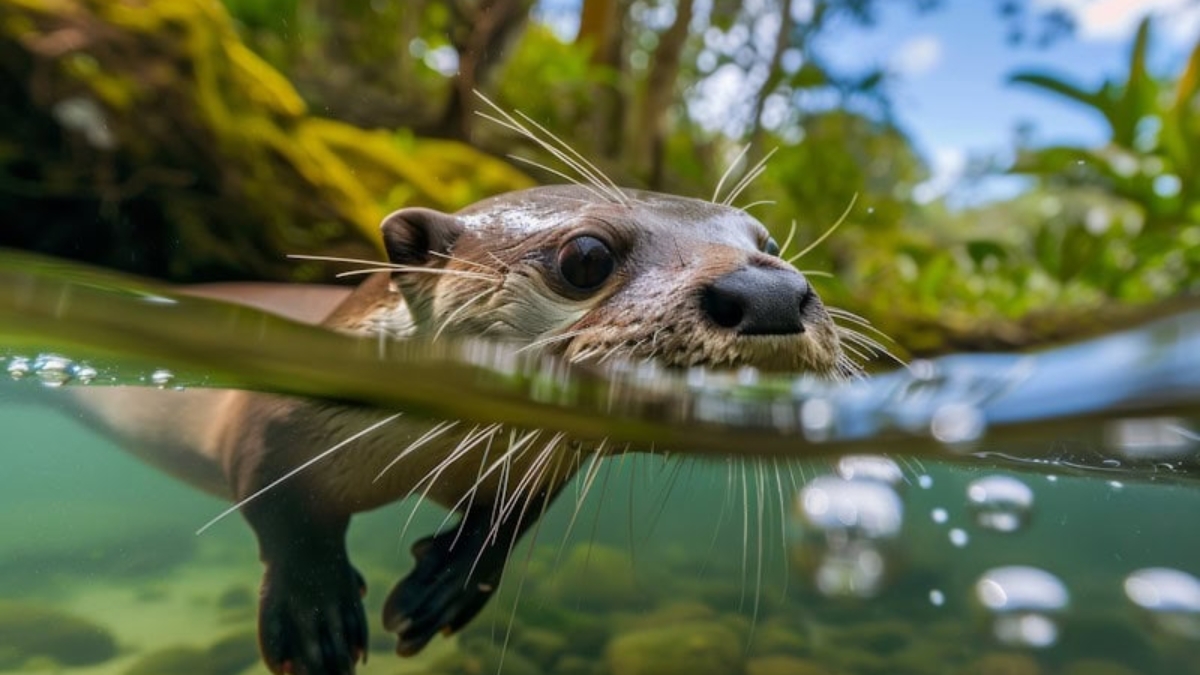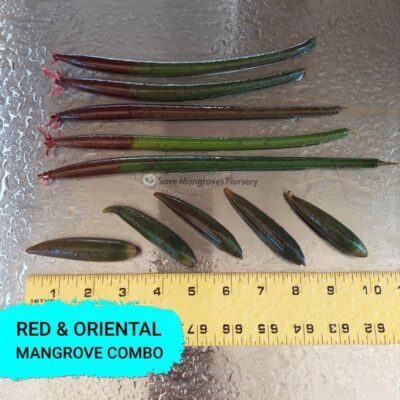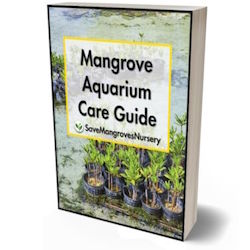Mangroves are fascinating plants that thrive in coastal ecosystems, known for their resilience in challenging environments. But can mangroves survive in pure freshwater? As an aquarium enthusiast, this question often comes up, especially from those looking to diversify their tank environments with these unique plants. The short answer is yes, mangroves can survive in freshwater, but their growth and overall health depend on a few key factors.
Understanding Mangroves Natural Habitat
Mangroves are typically found in coastal areas where saltwater and freshwater mix, creating a brackish environment. They have evolved to tolerate a wide range of salinity levels, from full-strength seawater to nearly freshwater conditions. This adaptability is one of the reasons why mangroves are so valuable in coastal ecosystems—they can thrive where many other plants cannot.
Mangroves in Freshwater: Pros and Cons
When considering adding mangroves to a freshwater aquarium, it’s essential to weigh the pros and cons.
Good:
✅ Mangroves are highly adaptable and can survive in freshwater.
✅ They can help with natural filtration, absorbing excess nutrients and improving water quality.
✅ Mangroves add a unique aesthetic to freshwater tanks, creating a natural, coastal vibe.
Bad:
❌ Mangroves may not grow as vigorously in pure freshwater as they would in brackish or saltwater environments.
❌ The lack of salinity might make the plants more susceptible to pests and diseases.
❌ Maintaining the correct balance of nutrients can be more challenging in a freshwater setup.
How to Care for Mangroves in Freshwater
If you’re considering adding mangroves to your freshwater aquarium, there are a few key care tips to keep in mind. Mangroves are hardy plants, but they do require specific conditions to thrive.
Light Requirements
Mangroves need plenty of light to grow, regardless of whether they’re in freshwater, brackish, or saltwater. Full-spectrum lighting that mimics natural sunlight is ideal, as it provides the necessary wavelengths for photosynthesis.
Good:
✅ Position your mangroves near a strong light source or use high-quality LED lights designed for plant growth.
Bad:
❌ Insufficient lighting can lead to stunted growth and poor health in mangroves.
❌ Overheating the tank with too much light can stress the plants and harm your aquarium’s ecosystem.
Nutrient Needs
In a freshwater aquarium, mangroves will absorb nutrients from the water, which can help reduce algae growth and improve overall water quality. However, you’ll need to monitor nutrient levels carefully to ensure your mangroves are getting what they need without depleting the water of essential elements.
Good:
✅ Regularly test your aquarium’s water to ensure balanced nutrient levels.
✅ Consider using root tabs or liquid fertilizers specifically designed for aquarium plants.
Bad:
❌ Over-fertilizing can lead to nutrient imbalances, which may harm your mangroves and other tank inhabitants.
❌ Neglecting regular water changes can result in nutrient deficiencies that stunt mangrove growth.
Root Development
Mangroves have unique root systems that help anchor them in coastal soils. In an aquarium setting, their roots will adapt to the substrate you provide, whether it’s sand, gravel, or a bare bottom.
Good:
✅ Allow mangrove roots to grow freely and naturally, providing enough space for them to expand.
✅ If you’re using a substrate, make sure it’s not too compacted, as this can restrict root growth.
Bad:
❌ Trimming mangrove roots too frequently can stress the plants and slow their growth.
❌ Failing to provide adequate space for root development can lead to poor anchoring and instability in the tank.
💡 Did you know that mangroves can filter out up to 90% of the salt from seawater? This unique ability allows them to survive in harsh coastal environments, making them incredibly resilient plants.
Common Challenges with Mangroves in Freshwater
While mangroves can survive in freshwater, there are some challenges you might encounter. Understanding these potential issues can help you address them before they become significant problems.
Pests and Diseases
In freshwater, mangroves might be more vulnerable to pests and diseases that they wouldn’t typically encounter in a saltier environment. For instance, freshwater snails or certain types of algae might become problematic.
Good:
✅ Regularly inspect your mangroves for signs of pests or disease.
✅ Use natural remedies or aquarium-safe treatments to address issues as they arise.
Bad:
❌ Ignoring early signs of pest infestations can lead to significant damage to your mangroves.
❌ Overusing chemical treatments can harm your aquarium’s delicate ecosystem.
Slow Growth Rate
Mangroves are slow-growing plants, and this growth can be even slower in a freshwater environment. Patience is key when keeping mangroves in your aquarium, as it may take several months or even years to see significant growth.
Good:
✅ Monitor your mangroves’ growth and adjust care routines as needed to promote healthy development.
Bad:
❌ Impatience can lead to over-fertilizing or over-pruning, which can stress your mangroves and slow their growth even further.
💡 Mangroves play a crucial role in carbon sequestration, helping to mitigate climate change by absorbing and storing carbon dioxide from the atmosphere.
How to Transition Mangroves from Brackish to Freshwater
If you’re starting with mangroves that have been grown in brackish water or saltwater, transitioning them to a freshwater environment requires care and patience. A sudden change in salinity can shock the plants and lead to stress or even death.
Gradual Acclimation
The key to successfully transitioning mangroves to freshwater is gradual acclimation. This process allows the plants to adjust to the lower salinity levels without experiencing too much stress.
Good:
✅ Slowly reduce the salinity of the water over several weeks, monitoring the mangroves for signs of stress.
✅ Provide plenty of light and nutrients during the acclimation process to support the plants’ health.
Bad:
❌ Rushing the acclimation process can lead to mangrove death.
❌ Neglecting to monitor water parameters during the transition can result in nutrient imbalances that harm your plants.
Final Thoughts: Can Mangroves Truly Thrive in Freshwater?
While mangroves can survive in pure freshwater, they may not thrive as they would in a brackish or saltwater environment. However, with proper care and attention, it’s possible to maintain healthy mangroves in a freshwater aquarium. Just remember to monitor their growth, provide adequate light and nutrients, and be patient as they adapt to their new surroundings.
At Save Mangroves Nursery, we specialize in providing healthy live Red Mangrove Plants that are ready to add to your Saltwater, Freshwater, or Brackish Aquarium tanks. Whether you’re a seasoned aquarium enthusiast or just starting, our mangroves can help create a thriving, natural environment in your tank. We ship to all 50 states daily, so you’re never too far away from adding these incredible plants to your aquarium.
Happy growing!
Best seller products
-
18”-24” Red Mangroves With Roots & 2-4 Leaves
Price range: $34.99 through $87.99 -
10”-14” Red Mangroves With Roots & 2-4 Leaves
Price range: $19.99 through $47.99 -
28″ Red Mangrove Tree – Fully Mature Plant
Price range: $0.00 through $230.00 -
[RARE] Orange Oriental Mangroves Propagule Seeds
Price range: $19.99 through $79.99 -
30″ Red Mangrove Tree – Fully Mature Plant
Price range: $0.00 through $180.00 -
Red & Oriental Mangrove Combo Bundle
Price range: $29.99 through $44.99
 Cart is empty
Cart is empty 




![[RARE] Orange Oriental Mangroves Propagule Seeds](https://savemangroves.com/wp-content/uploads/2025/07/Oriental-Mangrove-Seeds-Save-Mangroves-Nursery-400x400.jpg)



Add a Comment
You must be logged in to post a comment